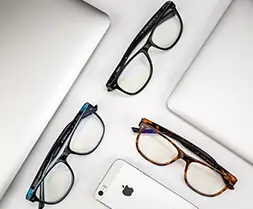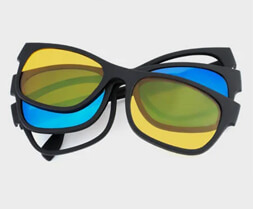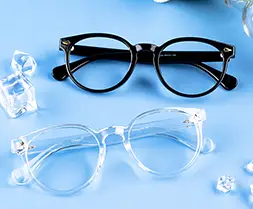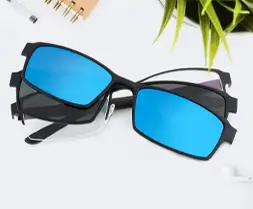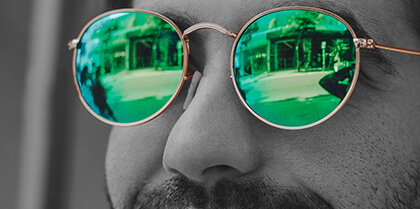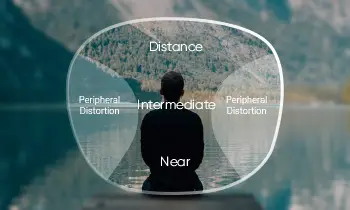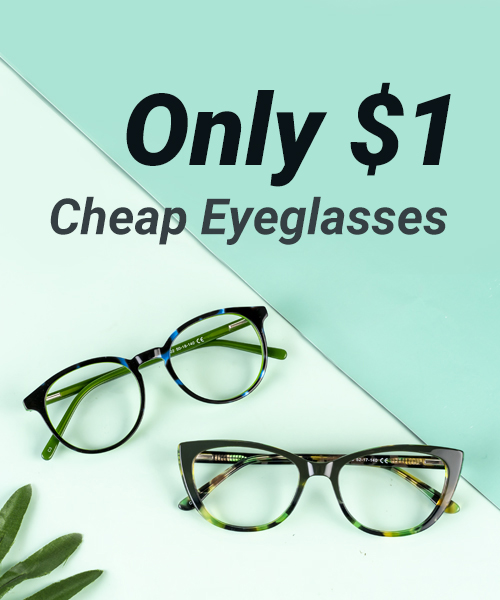No. 10 Accidental injury
Natural or artificial disasters are unpredictable, and receiving an accidental impact or injury to the head or eyes may affect vision. For example, firecrackers, car accidents, fist blows to the eye, etc. However, the chances are relatively small, and the damage is significant. Do not bend hard when your nearsightedness prescription is high.
No. 9 Psychological factors
This is one of the more easily overlooked factors. Excessive stress and depression all affect vision. Fear of wearing prescription eyeglasses and not wearing them when you should; a desire to wear eyeglasses and wear them indiscriminately when you shouldn't can both affect your vision.
No. 8 Dietary habits
A good diet guarantees a healthy body and a healthy eye vision. The process of seeing things requires the participation of vitamin A. The conduction of the optic nerve, in turn, needs the help of vitamin B. Preventing weak eyesight requires healthy blood vessels, for which vitamin C and vitamin E are helpful. In the absence of vitamin A, the eyes often feel dry and astringent, easily fatigued, and in severe cases, the white surface of the eye is dry and wrinkled, even leading to corneal ulcers.
No. 7 Lesion and drug poison
Eye diseases (pink eye, keratitis, cataracts, glaucoma, etc.) and non-eye diseases (diabetes, cervical cone disease, hypertension, persistent fever, etc.) may affect eye vision for a short or long time. Some medicines and viruses can also affect eyesight, including eye drops, which can affect your eye vision when used with dependence. The eye's aging (macular degeneration, decreased density of cone cells, etc.) will also affect eyesight.
No. 6 Genetics
The majority of nearsightedness in preschool children is genetic in origin. Overall, shortsightedness is genetic in about 5% of cases. Children with two parents who are both highly nearsighted (800 degrees or more) have a high probability of nearsightedness. Therefore, experts recommend that both parents with high prescriptions should not get married.
No. 5 Eye hygiene
Poor eye hygiene habits can have a profound killing effect on the eyes. This includes overworking, frequently wiping your eyes with your hands, reading in bed, etc. One bad habit is enough to ruin a pair of good eyesight.
No. 4 Environmental factors
Many circumstances that we cannot personally change surround us. Unknowingly, the eyes are harmed. This includes uneven reflections on the classroom chalkboard, walls that are too bright, lighting that is too bright or too dark, and inappropriate tables and chairs that can directly and over time affect our eye vision silently.
No. 3 Watching TV
It's in the top 3! Everyone with some visual ability probably watches television. Watching TV is when we use our eyes the most at moderate distances. The TV itself is a specific flickering luminous body. Coupled with a relatively short distance, watching TV for a long time makes it easier to produce fatigue, especially for children and adolescents. Eye vision is not mature, and it is easy to cause damage.
No. 2 Reading and writing
The runner-up is out! The coverage is extensive from childhood need to learn, memory, and nearsightedness accompanied by the progress of learning and deepening. Reading and writing are done at close range with good eye vision, relying mainly on the visual cone cells. Excessive fatigue of the visible cells will bring about the fatigue of the entire visual system, eye muscle, eye, etc., corresponding to pathological, physiological changes.
No. 1 Use of computers, tablets, and cell phones
The winner makes a grand entrance! We can hardly study, work, live and play without computers, which may become tablets and cell phones in recent years. They are luminous bodies at close range. But unfortunately, computers and cell phones, as the most frequent tool for our eyes at close range, are also the source of the most significant fatigue to the eyes. Surveys show that 82.4% of computer users suffer from computer vision syndrome—the performance of dry eyes, swelling and pain, vision loss, incidental dizziness, and neck acidity. In the United States, this is ranked first as an occupational disease! So, slowing down the eye strain of using computers should also be placed in the first place of our human eye care!



